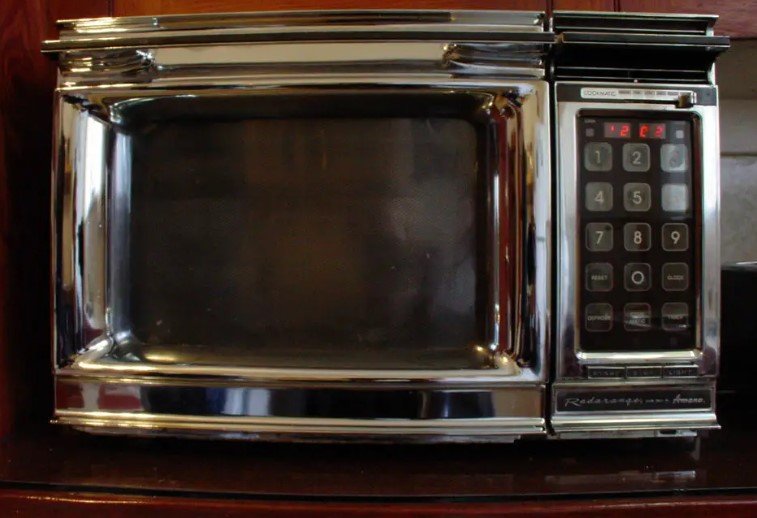Many of you may have noticed rust forming inside your microwave and wondered if it poses any health risks or affects the performance of the appliance. It is crucial to address rust in your microwave as soon as possible to ensure safe and efficient use. In this blog post, we will explore the potential consequences of having rust inside your microwave and provide tips on how to prevent and deal with this issue effectively.
Key Takeaways:
- Rust inside a microwave can be a health hazard: Rust can cause arcing, sparking, and potential fire hazards.
- Rust can affect the performance of the microwave: It can interfere with the functioning of the appliance, leading to uneven heating or cooking.
- Rust can contaminate your food: Flakes of rust can fall off and mix with your food, posing a risk to your health.
- Regular maintenance is necessary: Keep your microwave clean and address any signs of rust promptly to ensure safe and optimal use.
- If you spot rust, consult a professional: It is recommended to seek advice from a technician or manufacturer to determine if the microwave is safe to use or if it needs repair or replacement.

Dangers of Rust Inside Your Microwave
Potential Health Hazards
One potential danger of rust inside your microwave is the possibility of chemical contamination. When rust forms on the interior surfaces of your microwave, it can flake off and mix with your food during the heating process. Consuming rust particles can be harmful to your health and may cause stomach issues or other adverse reactions.
Effects on Food Safety
Rust inside your microwave can also compromise the safety of your food. When rust comes into contact with your food, it can introduce harmful bacteria or other contaminants, increasing the risk of foodborne illnesses. It’s necessary to ensure that your microwave is clean and free of rust to maintain the safety of the food you are heating.
Rust can also absorb some of the microwave energy, leading to uneven heating of your food. This can result in cold spots where bacteria can thrive, further increasing the risk of foodborne illnesses.
Safety
It is crucial to address any rust inside your microwave promptly to prevent health hazards and ensure food safety. Regularly inspect the interior of your microwave for signs of rust and clean it thoroughly according to the manufacturer’s instructions. If you notice any rust forming, consider replacing the microwave to avoid any potential risks to your health and safety.
How to Prevent and Remove Rust from Your Microwave
Maintenance Tips
There’s no need to panic if you spot rust in your microwave. With proper care and maintenance, you can prevent rust from forming in the first place. To keep your microwave rust-free, make sure to wipe down the interior regularly after use. Moisture and food splatters can contribute to rust formation, so by keeping it clean and dry, you can avoid this issue.
- Regularly wipe down the interior of your microwave with a clean, damp cloth
- Avoid leaving spills or food residues inside the microwave for extended periods
Assume that prevention is key when it comes to rust in your microwave. By taking simple steps to maintain its cleanliness, you can prolong its lifespan and prevent rust from becoming a major problem.
Cleaning and Rust Removal Techniques
On occasion, despite your best efforts, you may still discover rust inside your microwave. In such cases, it’s imperative to know how to effectively remove the rust to prevent it from spreading further. The key is to tackle the rust as soon as you notice it to prevent any potential health hazards.
To address rust in your microwave, you can use a mixture of vinegar and water to create a natural cleaning solution. Simply dip a cloth in the vinegar mixture and gently scrub the rusted areas. This solution is gentle yet effective in removing rust stains without causing damage to the microwave interior.
Common Misconceptions About Microwave Rust
Not all rust inside your microwave is as harmful as you might think. There are some common misconceptions about microwave rust that can cause unnecessary alarm.
One common misconception is that any trace of rust inside your microwave automatically renders it unsafe to use. This is not entirely true. While large amounts of rust can pose a risk to your health and affect the performance of the microwave, small spots of rust might not have a significant impact.
Another misconception is that once rust appears, there is no way to prevent it from spreading further. This is not the case. By addressing the rust promptly and taking preventive measures, such as keeping your microwave clean and dry, you can stop the rust from worsening and spreading to other areas.
Some may believe that using a rusty microwave will contaminate the food and make it unsafe to consume. While it is vital to maintain a clean and rust-free microwave for food safety, not all rust inside the microwave will transfer to your food during heating. Proper cleaning and covering your food can help prevent any potential contamination.
It is crucial to separate facts from misconceptions when it comes to rust inside your microwave. By understanding the actual risks and taking appropriate actions, you can ensure the safety of your appliance and continue to use it without unnecessary worry.
Summing up
Now you know that having rust inside your microwave is not only unappetizing but can also be a health hazard. Rust can lead to arcing, sparking, and fire hazards, as well as potentially contaminating your food. It’s important to inspect your microwave regularly and address any rust spots immediately to ensure your safety and the longevity of your appliance.
FAQ
Q: What causes rust to form inside a microwave?
A: Rust inside a microwave is typically caused by food splatters or spills that have not been cleaned up promptly. The moisture from these spills can lead to rust formation on the interior surfaces of the microwave.
Q: Is it safe to use a microwave with rust inside?
A: While a small amount of superficial rust may not pose an immediate health risk, it is generally not recommended to use a microwave with rust inside. Rust can affect the heating efficiency of the microwave and may contaminate food during the cooking process.
Q: How can I prevent rust from forming inside my microwave?
A: To prevent rust from forming inside your microwave, it is important to clean up spills and splatters promptly. You can also place a microwave-safe cover over food when heating to prevent splattering inside the microwave.
Q: Can rust inside a microwave be removed?
A: In some cases, light rust inside a microwave can be removed using a mild abrasive cleaner or a mixture of baking soda and water. However, if the rust is extensive or if it has caused pitting on the interior surfaces, it may be best to replace the microwave.
Q: Is it worth repairing a microwave with rust inside?
A: In most cases, it is not worth repairing a microwave with rust inside, especially if the rust is widespread or if it has compromised the integrity of the interior surfaces. It is often more cost-effective and safer to replace the microwave altogether.














